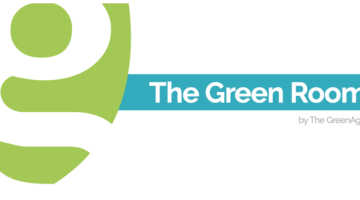
When we think of fireplaces, we think of them warming us up, not cooling us down. It’s true that fireplaces can be one of the best ways to heat a home. Although burning wood is not the cleanest and certainly contributes to air pollution, if used responsibly it does have a much lower carbon footprint than a lot of other heating systems. Wood is considered a carbon-neutral energy source, since the carbon it gives off when burned is equal to the CO2 it absorbed as it grew. In reality, processing and transportation mean that it is not as neutral as we’d like, and whether wood should be counted as a renewable resource is debatable.
Regardless of how much you love or hate your fireplace, what is certain is that it spends a lot of time not in use. This means that there is an open hole in the thermal envelope of your property, letting cold air in and warm air out. It’s like leaving a small window open. Continuing to heat your home while the air escapes through this gap can have a big effect on your energy bills. The University of Liverpool calculated that we lose around 4% of household heat out of the chimney, but if you want to know your specific heat lose, you can access a stack effect calculator here.
Chimney balloon
A simple solution to a simple problem. The chimney balloon comes in a host of different sizes – simply put in place and inflate it to create a barrier, preventing the transfer of heat. It’s a good concept, but there are problems. The chimney balloon is not the easiest to install and it can have problems. They puncture fairly easily, and can fall out if it gets too cold (cold air contracts). They are designed to let a little air flow around the edges to prevent damp (although we’re draught-proofing here, it’s important to
let the room breath), however in practice, if they’re overinflated then they can cause problems.
There’s also the risk of forgetting that it’s there when you go to light the fire. This can be extremely dangerous if you’re using a cheap PVC model. That’s why, if you’re considering a chimney balloon, we recommend going for the Chimney Balloon branded product, since they are designed to react to fire by shrivelling up and falling into the grate.
Chimney sheep
The chimney sheep works on the same principle as the chimney balloon, blocking up the chimney. Where the chimney sheep has an advantage over the ballon is what it’s made out of and how it’s designed. The chimney sheep is a flat-ish draught excluder made from 100% sheeps wool and a recycled plastic handle. Since the object is, well, woolly, it can be pushed up into the chimney and will hold itself up (as chimneys tend to taper inwards). It beats the chimney balloon by being a breathable, natural material. This means you’re much less likely to have problems with damp and condensation.
There still is the issue of forgetting that it’s there and starting a fire below it. Unlike the balloon, which will wilt harmlessly to the floor, the chimney sheep is fire retardant, meaning that a fire lit beneath it has the potential to continue burning and releasing noxious fumes into your home! That said, it will become apparent very, very quickly that the chimney is blocked, and it’s easy to do something about it, using the handle to pull out the sheep.
It’s a more expensive than the chimney balloon, but not by as much as you might think. You can get them on Amazon from £17.50, or direct from the manufacturer here.
Pillow
The cheapest and most basic solution – an old pillow. Some people swear by wrapping a pillow in binbags or something else waterproof, and pushing it up the chimney. This comes with a lot of problems, however. Although it’s cheap, the pillow is prone to sucking up moisture, causing mold and blocking the chimney from breathing. It also has nothing to remind anyone lighting a fire that it’s there, and has passed no fire safety tests. This is definitely not an option you want to explore. It’s bad for your house, health, and safety!
Handles, charms and reminders!
When choosing how best to temporarily draught-proof your chimney, one of your top priorities should be some kind of reminder that it’s there. Chimney balloons have long protruding handles while Chimney Sheep offers decorative charms for their products. If you’re using a less visible option or are concerned at all that this won’t be enough, then consider a reminder note stuck to the back of your fireplace or something similar. Remember – you might not be one lighting the fire next time!
Think we missed something? Do you have a different opinion?
Comment below to get your voice heard…












Absolutely no chance of lighting fires here, with that in mind, can someone explain why hygroscopic (absorbs moisture) sheeps wool is any different to an old pillow which, as per this article “is prone to sucking up moisture”…
And why a pillow wrapped in plastic, which is essentially the same as the inflated baloon devices, but without the disadvantage of deflating, is also such a bad idea…?
Try a Chimella
These ideas are bad because they don’t sell you a Chimeny pillow. LOL
Will, These ideas are bad because they don’t sell you a Chimeny pillow. LOL
I’m leaning towards the pillow option and I can’t quite understand if that’s an option I “don’t want to explore” or if that’s referring to lighting the fire with pillow in situ
Bought a chimney balloon and I don’t see the appeal. Cheap plastic (although not reflected in the price), poorly fitting and I can’t see it lasting
Try a Chimella
Excellent questions! Too bad the author has not provided answers.
i used loft insulation wrapped in a bin liner and stuffed up the cavity, seems to have held for 7-8 years
Chimella (The Award winning Chimney Umbrella) is definitely a simple solution to this simple problem.